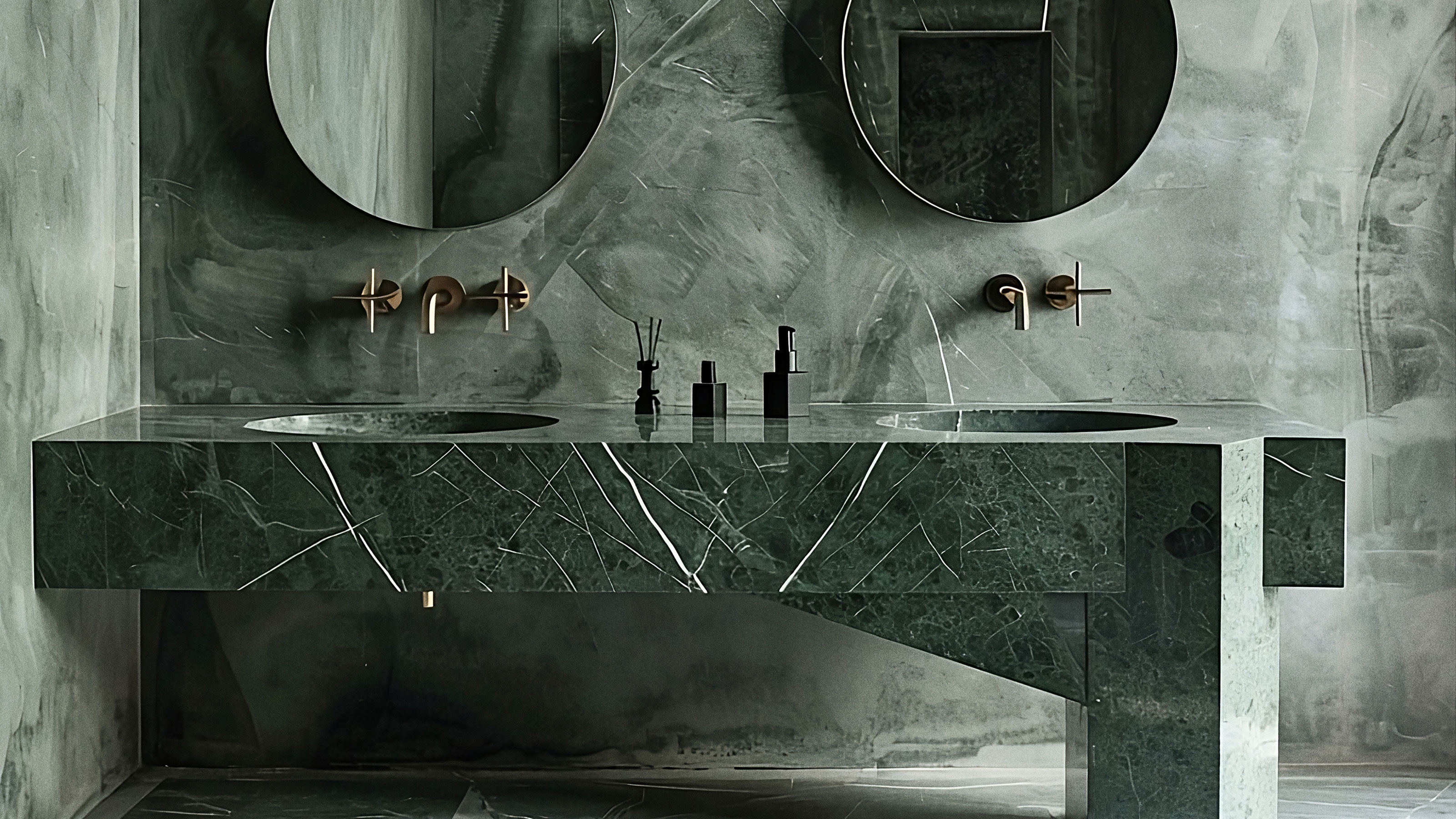
There is a perfectly plain reason to customize your vanity area: it is often the focal point of bathrooms, whether you like it or not. From countertops to sinks and cabinetry (not to forget a bathroom mirror), the amount of details concentrated in one space can create an altogether eye-catching design moment.
‘It's worth using the excuse to create something beautiful, and there are endless possibilities in combining elements that must exist next to each other to create a functional bathroom interior, and which can be composed to create a unique combination of textures, shapes, and solids,’ says designer Katarzyna Baumiller.
Designers flex dramatic materials like marble to craft sculptural bathroom vanities in fascinating shapes and colors, or bespoke bathroom storage ideas that maximize space and usher in textural surfaces beyond the reach of store-bought solutions. Throw in a dazzling mirror and flattering lighting, and your vanity area is guaranteed to take center stage.
Going bespoke? These crafted vanity areas bring a new layer of attraction to these next-level bathrooms.
1. Hide power outlets
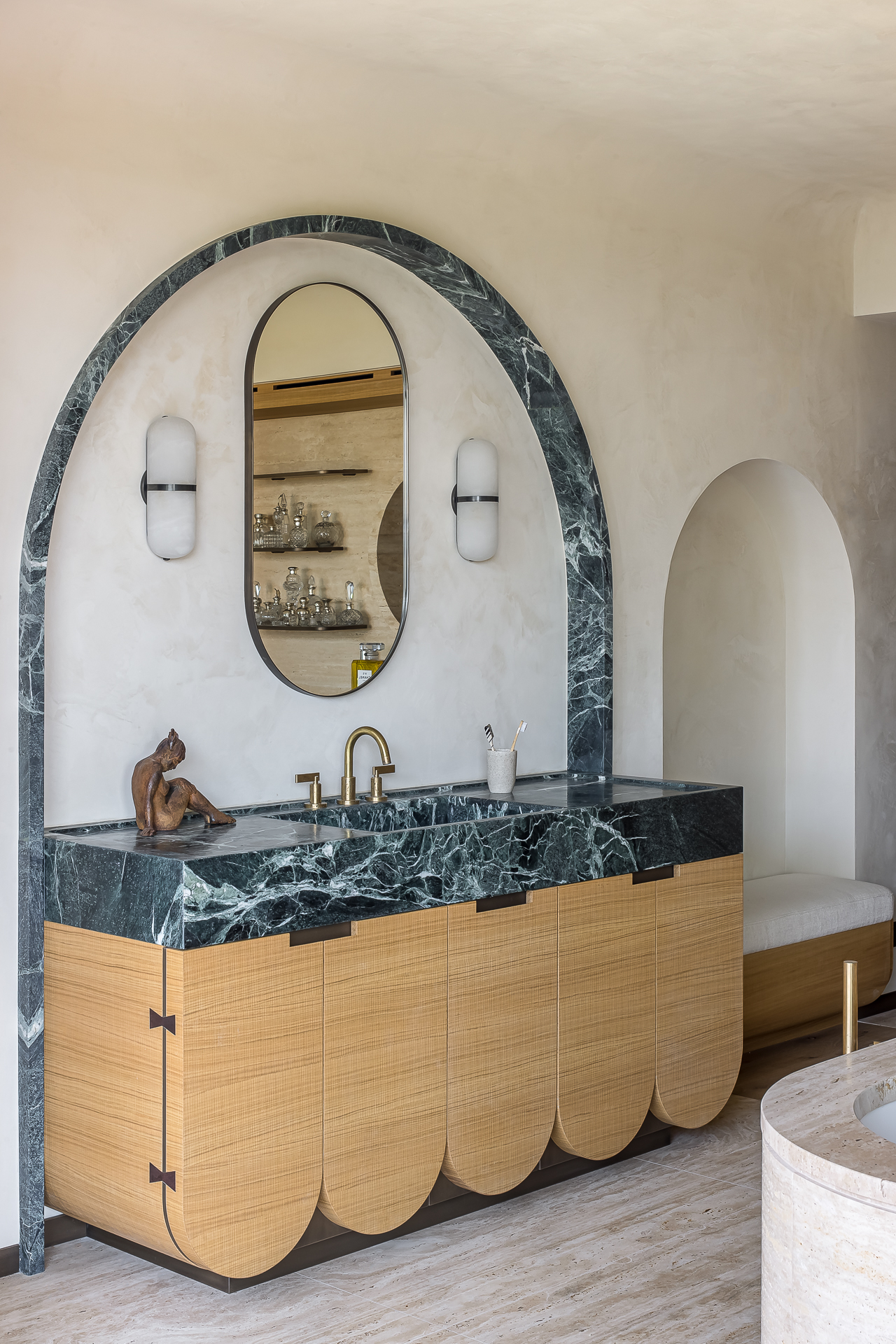
Bespoke aesthetics are on full display in this material-rich bathroom, where a custom oval-shaped mirror shines alongside a green marble arch that frames the entire vanity area. But what don’t you see here? A single power outlet. ‘Installing electrical outlets at strategic locations in the bathroom makes it easy to plug in electrical appliances such as hair dryers, electric razors, or electric toothbrushes,’ says French studio Caprini & Pellerin of their disguised and tailored-to-perfection vision. ‘We always make sure that they are hidden in the cabinets to keep the aesthetics.’
Beyond hiding the powder outlets, some of the most functional elements of this bathroom are also kept under wraps, creating something of a theme for this clever space. 'A custom oval-shaped mirror conceals a recessed medicine cabinet in the wall, providing convenient storage space,' adds Caprini & Pellerin. 'To the right of the basin, a bespoke bench hides a laundry basket, combining functionality and aesthetics.'
2. Focus on fixtures
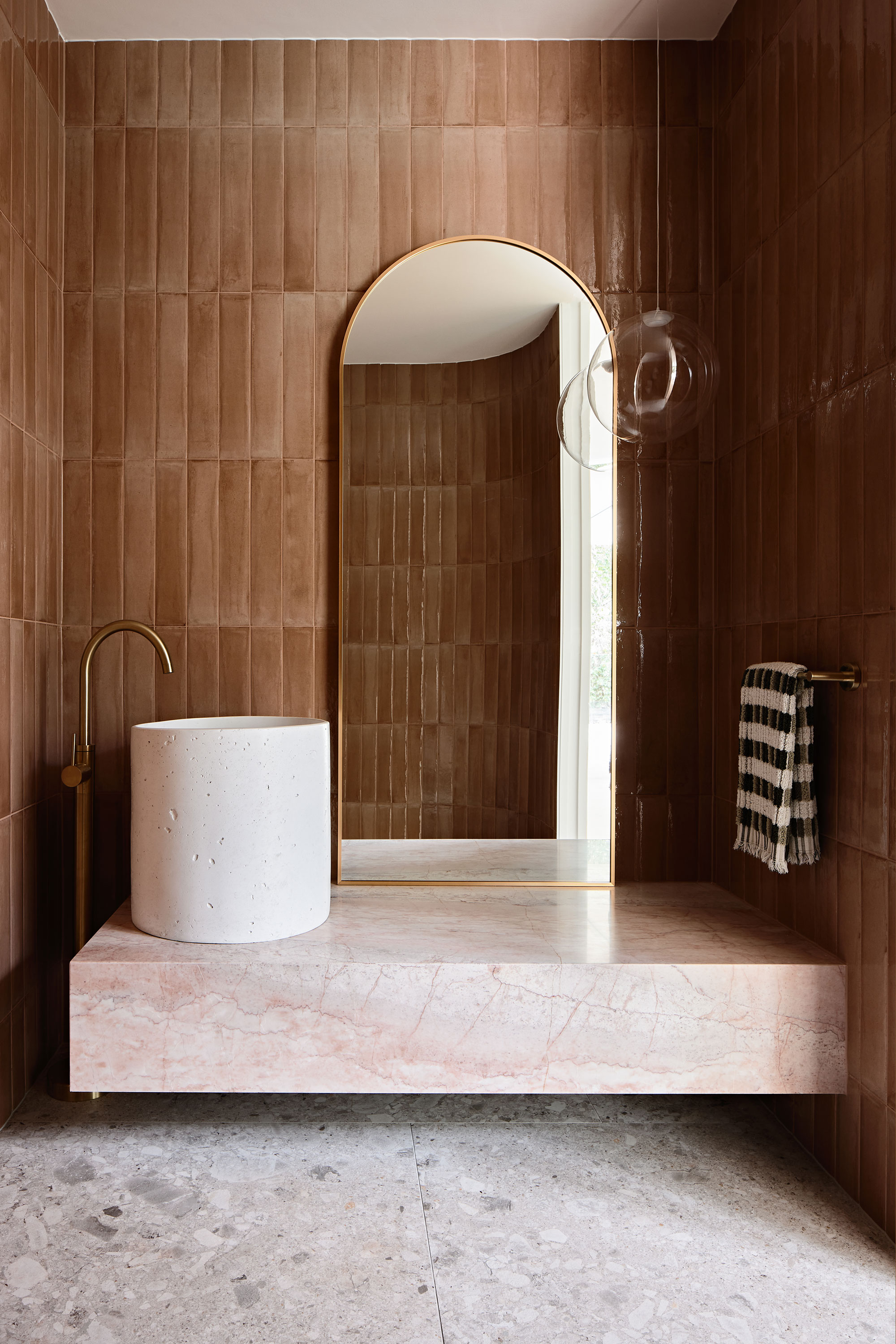
Playing with balance and levels, designer Kate Cooper used a clever bath faucet to mix up the traditional setup, ultimately creating a vanity area that gives levity to hefty materials. ‘I wanted to use a floor-mounted bath filler that spilled into a pedestal style basin, and the idea of doing a stone floating vanity was then brought to life,’ says Kate, noting how the faucet arches over a custom pink marble bench. ‘I love to have more fun in a powder room as it services guests and it's always great to surprise people when they walk into a space.’
For Kate, the powder room represents a great opportunity for a memorable design moment because it’s free of necessary features typical of primary bathrooms. 'If you have the ability to have no parameters–like I did in this project–you are at an advantage because this is usually when the design magic happens,’ says Kate.
3. Draw your own
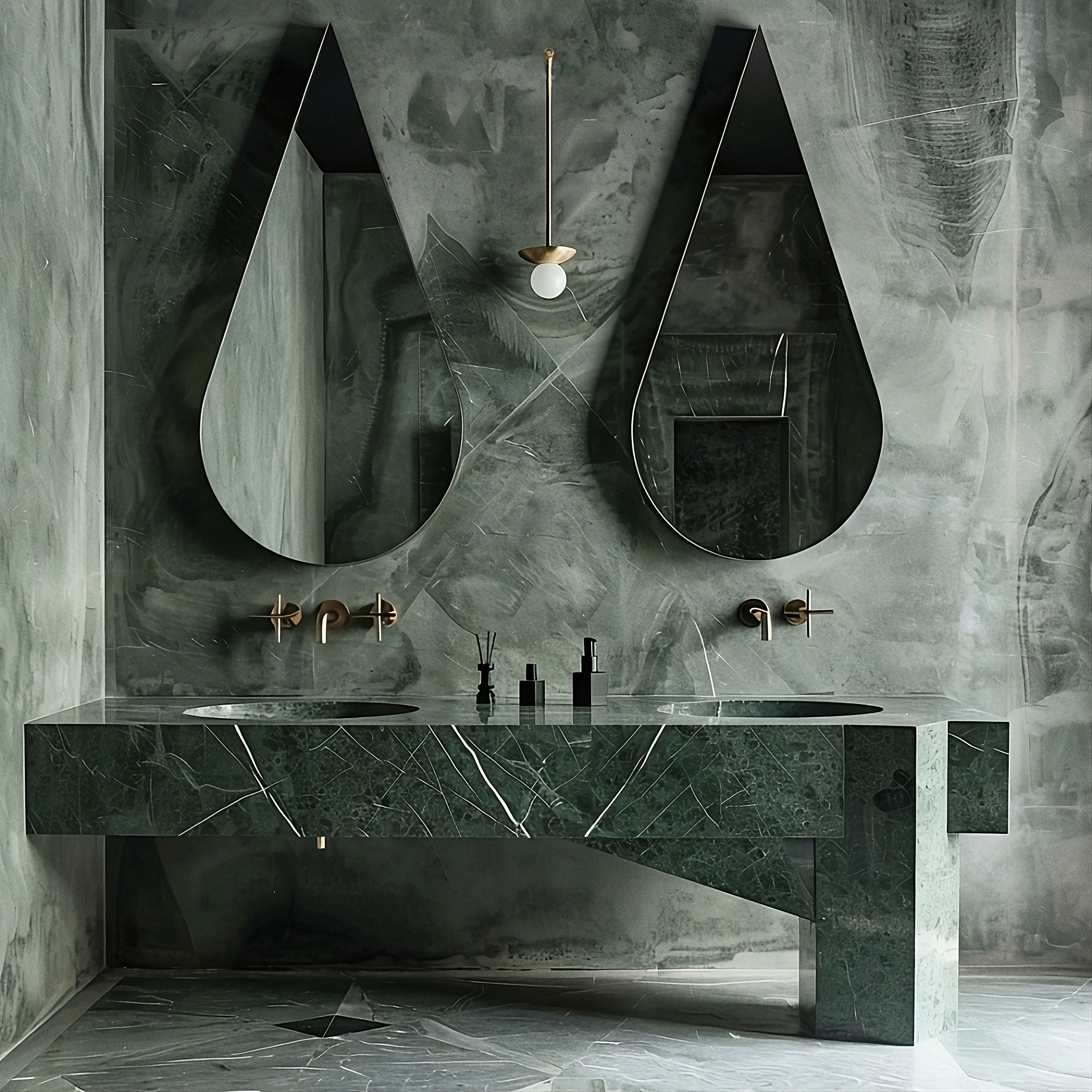
The vanity area can seem daunting with so many crucial elements—sinks, mirrors, millwork, hardware, and more. But designer Cara Woodhouse believes that if you can dream it, or draw a picture of it, you can find someone to build it. ‘Don't be afraid to go for it and try to create something different,’ says Cara, who created this abstract double vanity in dramatic green marble for this modern bathroom. ‘People get very overwhelmed by custom pieces, but don't! All you have to do is draw a sketch, show an image of something that inspires you and find a local fabricator or millworker to create it.’
Here, the double vanity offers an opportunity to create repetition in interior design, which Cara leaned into with two teardrop mirrors for extra visual interest. 'When I created this vanity I wanted to design something eye-catching and unexpected that left people questioning so many things,' adds Cara. 'I wanted it to feel elevated and architectural with a unique design layout.'
4. Splash out on materials
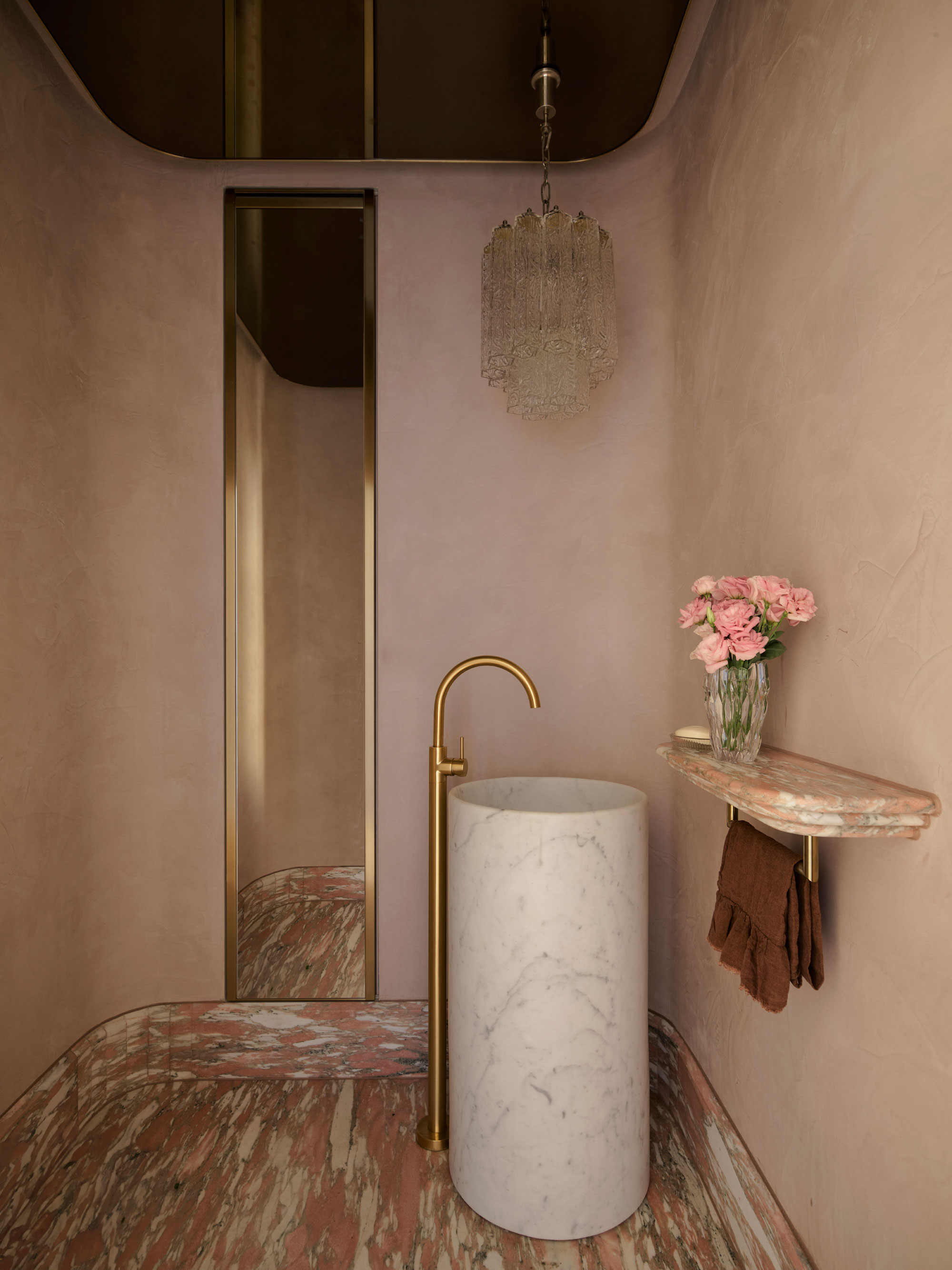
Choosing a dramatic material is one of the easiest ways to make a statement. ‘Materiality is key–as the spaces tend to be smaller it’s a great area to splash out on a fabulous feature stone or a specialist wall finish,’ says designer Liz Ride. But the material does not stand alone in this interior: Liz made the most of a sculptural sink by placing a full height mirror alongside it, plus an adjacent marble shelf. ‘Ideally storage is concealed, towels and soap are accounted for and areas for display or decoration are integrated.’
A variety of elements that can mix up your vanity area’s palette, from hardware to joinery and surrounding surfaces. 'Customization allows for a unique proposal of form and materiality that is specifically designed for the space and for the overall look and feel of the home,' adds Liz. 'It is often a compact space, where a splurge on high end materials or fittings is more affordable but can definitely bring the ‘wow’!'
5. Be bold with shape
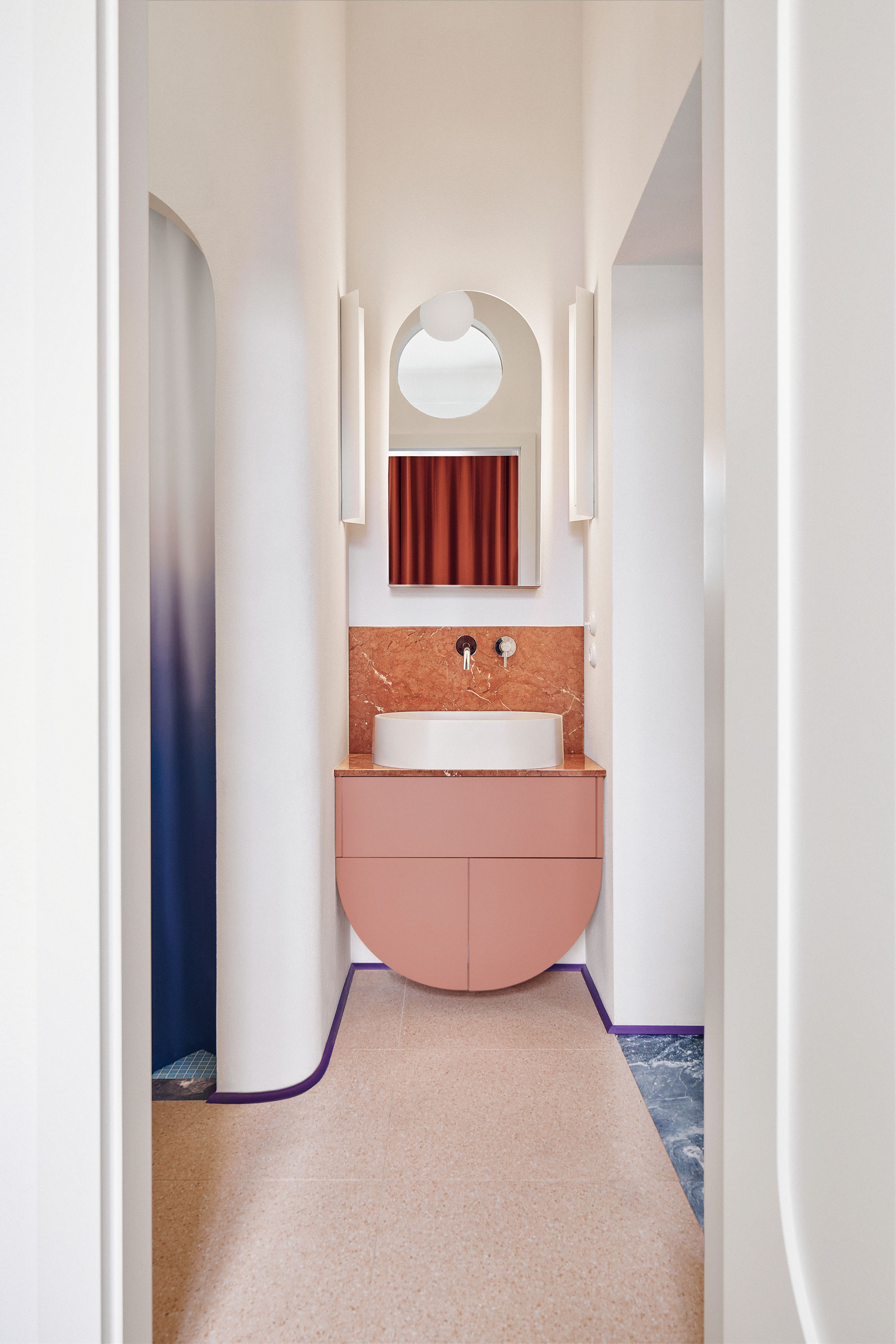
While many modern vanity areas are shaped around rectangular or square cabinetry, this playful design gives the concept a twist–a rounded base floats above the floor, reflecting similar curves in an arched mirror installed above. ‘I like to surprise with a clever combination of shapes,’ says designer Katarzyna Baumiller, who also plays with materials, colors and textures to create vanities that are altogether unique. ‘I think it's important not to be afraid of non-obvious combinations, because it pleases the eye and inspires.’
After all, the vanity is often a focal point of the bathroom. 'In this particular project, I wanted to create a composition that appears when the bedroom door is opened,' adds Katarzyna. 'It is the first thing you see when entering a bathroom. The entry axis obliges you to think about its ending.'
6. Base
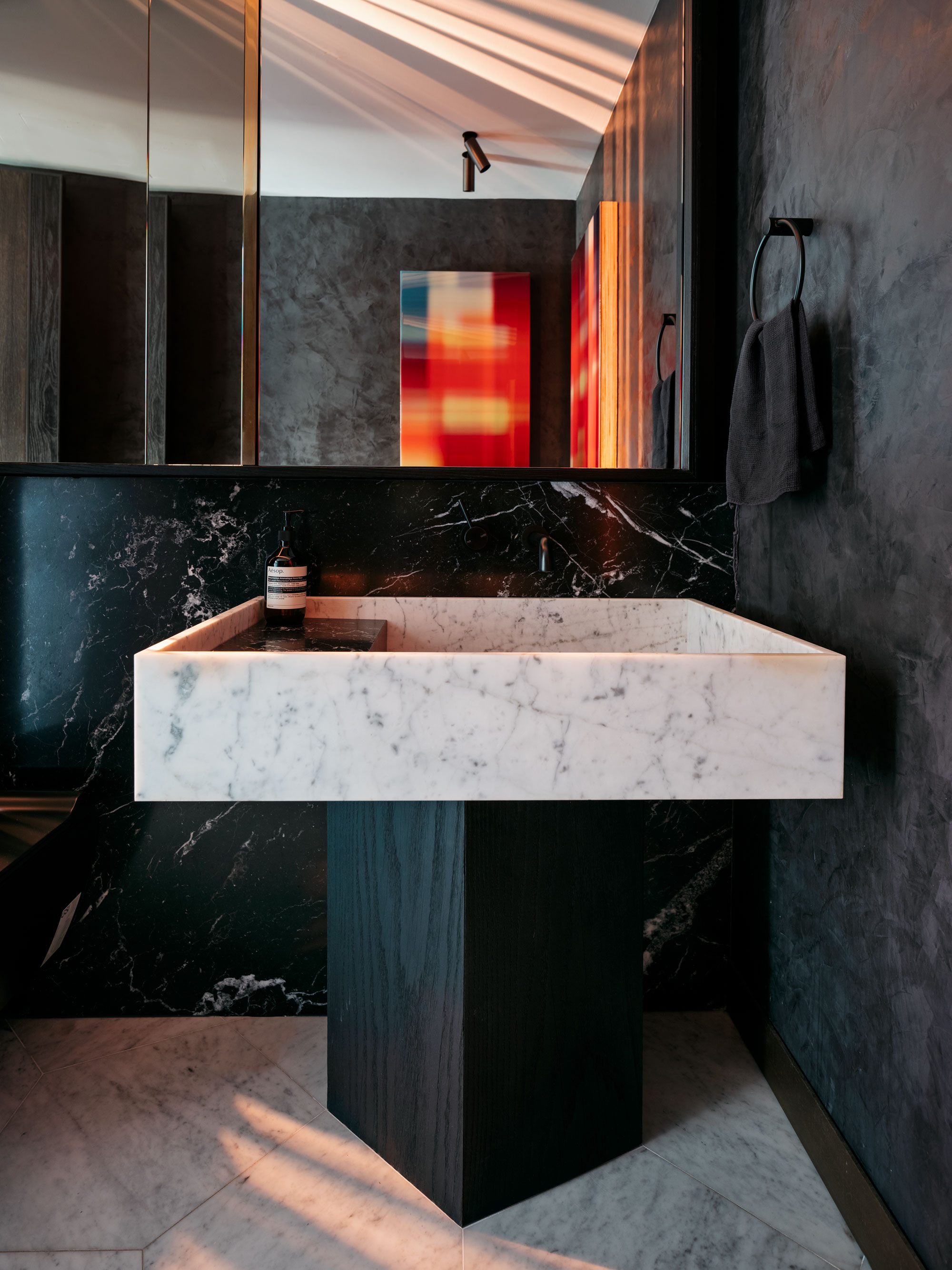
Conceived by New York and Sydney based designers Dylan and Nicolette Farrell of Dylan Farrell Design, the geometric base for this bathroom sink was achieved with a simple twist: the shape matches custom pentagonal floor tiles beneath it. ‘If you want to make for an interesting shaped vanity without blowing a budget, try and reduce the amount of functions required,’ recommends Dylan. ‘For example, if you need toilet paper storage, attempt to find it in an adjacent location, like a wall niche, medicine cabinet, or decorative basket. This way there are less moving parts to be addressed when considering atypical shapes, materials, or finishes.’
The surprising geometry was a perfect fit for the project’s creative design scheme. 'This powder room was designed as part of an art-filled loft, which was sculptural in both its architectural and decorative fit-outs–so the powder room needed to embody this overall concept,' adds Dylan. 'We decided to minimiZe the amount of objects and feature finishes in the space down to black and white–and have the paintings, vanity shapes, and light output itself take front stage. Those three elements were intended to interact together in a dance of angular overlap and blending.'
What trends are there for custom bathroom vanities?
‘We have definitely seen a trend where people want to adopt a more luxurious, hotel-like approach to the vanity area, especially in guest powder rooms,’ says Liz Ride, Associate Director at Studio Tate, noting how these compact spaces represent an affordable place to splurge on high-end materials and fittings–a small area with major wow-factor potential.
And for many designers, the vanity area is just another way to create an experience, a design moment that gives us pause. ‘Our time in a washroom is usually solitary, quiet, and contemplative–whether we are in our own home or someone else's–so those occasions are prime times to reflect on a piece of consequential design,’ says designer Dylan Farrell.







